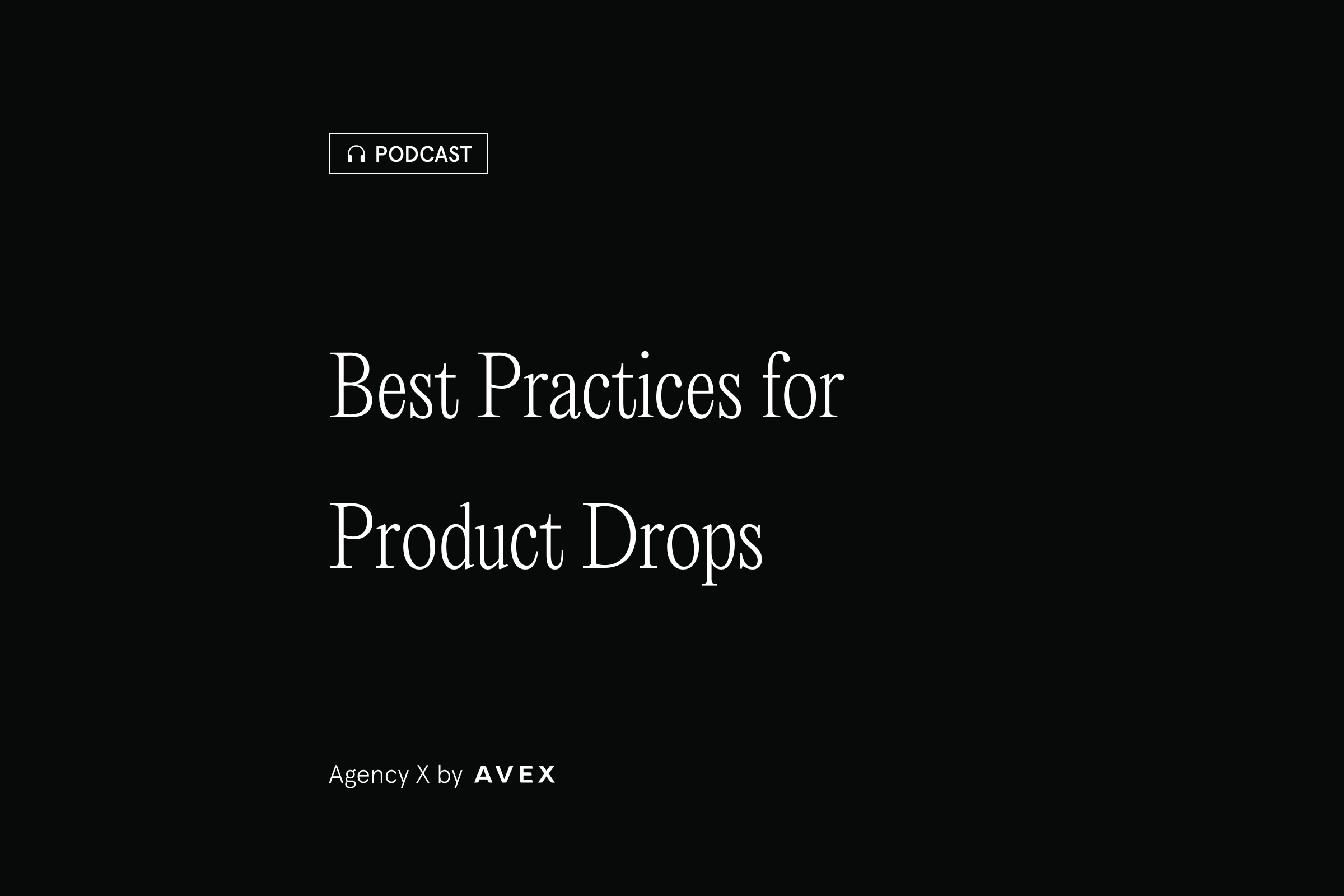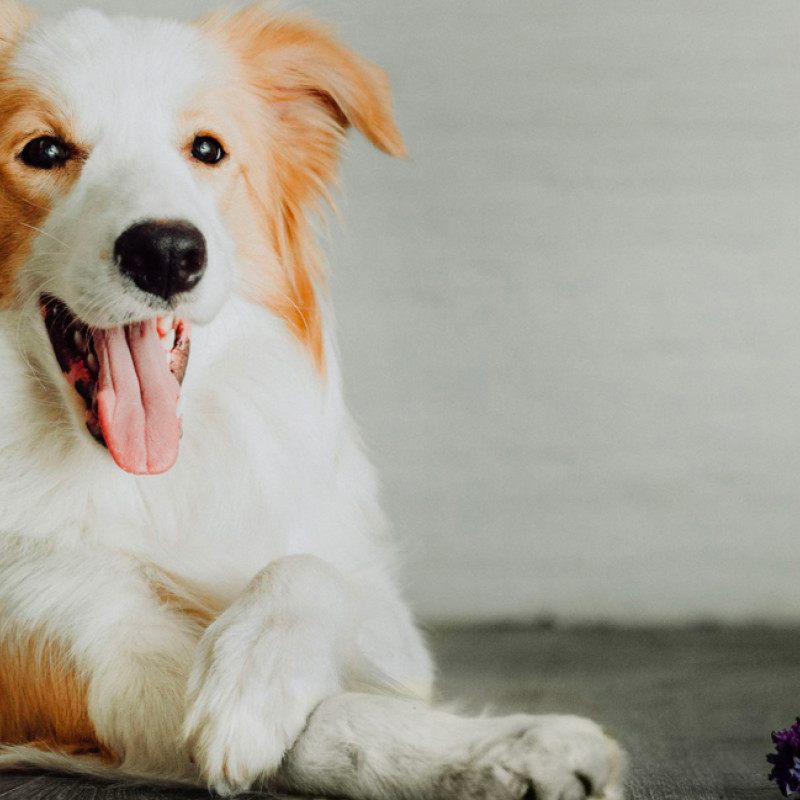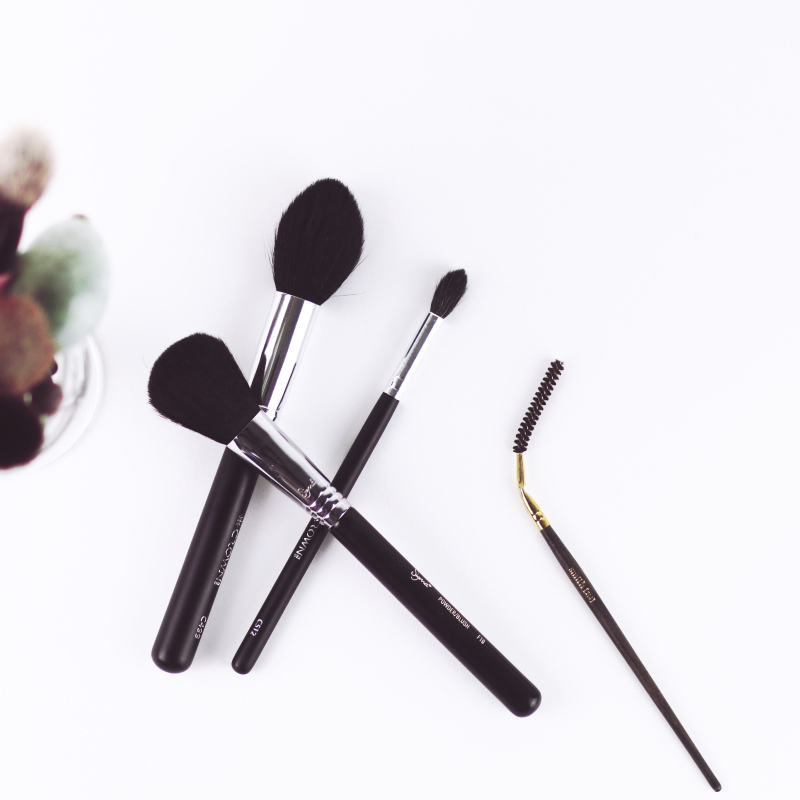Agency X Podcast: Best Practices for Product Drops

Quick Summary Product drops can be beneficial to your brand and revenue. However, newer brands need to make sure they are timing their first drop correctly.
Below is a transcription of the highlights from our podcast episode on product drops. If you’d rather listen to the episode, click here.
What Is a Product Drop? Why do them?
John 4:25 - 5:27 A product drop is when you have some sort of limited run product that has a specific release date, and is really geared towards your core customer base. There's going to be a limited time that's available or there's a limited quantity, and it's going to be up on x date and over by another date.
The real goal of it is to drive as much traffic to the site for one specific purpose and drive sales for that one product. Of course you want to try to do upsells and cross-sells and things like that, but the main purpose is to drive an insane amount of traffic, and have a product sell it out.
There’s so much opportunity there to be able to gather more customers. It could be a limited offer, it could be a collaboration, or it could even just be a flash sale that's only going to be 50% off or 75% off for a certain amount of time.
How Do Brands Run Successful Product Drops?
Brand Example: Kith
John 7:29 - 8:38 What Kith did was they built a community. They focused on branding for years before they started doing product drops. The founder, Ronnie, did collaborations with Asics, Nike, and numerous other brands, really gaining popularity and notoriety in the streetwear and footwear space. They didn't come out of the gate doing drops, at least not the way they're doing them today or over the past few years. So they built that community and built the platform.
There are two key things: having a community and a platform to speak for them. Having millions of followers on social channels, and really getting people to fall in love with the brand. Additionally, they had a story to tell. So to me, those three things are extremely important, not only for drops, but developing a brand. The three most important things to develop a brand that allows you to do those product drops are going to be community, platform, and a story to tell.
Brand Example: Andbox
John 9:17 - 9:47 What Andbox did was they became well known in the gaming space. They took that community that already existed, and they built a following around their teams. They then released products like clothing around that, had specific drops, and partnered with influencers. They leveraged their platforms in their community and told their story on those channels, and they were able to have these specific product drops.
Creating a Brand’s Community
Brand Example: New Yorker
David 12:06 - 12:41 The brand New Yorkers was built on the premise of, you know, the New York Queens community. And that's a strong part of it, I think international at this point, but still, they have a lot of their content even is based around like New York. They will showcase lifestyle content from others, but it's really like this New York group.
I think it's an emotional feeling that is hard to fake. And I think that's why for newer brands that don't have any community or following is, you shouldn't try to do a drop model out of the gate. It can be very profitable, but you need the groundwork in order to, you know, make it happen.
Brand Example: Yetee
David 13:06 - 14:38 Yetee actually does daily product drops. It's the core of their business model. They sell a lot of different things; it's a lot of pop culture and gaming-related merchandise. A big part of their branding and value prop is their daily t-shirts. Customers have one day to get something and after that happens, they can't get those products again. So it's not even based on a limited quantity, it's based on limited time.
They own the production of shirts, it's not like dropshipping. Because they own that production, they can make these products quicker and cheaper. So they leverage that to pivot from just being a T-shirt seller to working with a community of artists.
You can submit your art for this, which I love. Every day there is a new design from a new artist. And that's a huge part of the community they've built up because essentially, they've used their model to actually build a community, which I've I've personally never seen before. All of their designs are based on user submissions, and they will get a cut of sales and they'll get some perks. But I absolutely love that model because it is based on scarcity, but it's also hugely based on community and that sense of FOMO.
Learn how we can enhance your site's Creative Direction
Leveraging Celebrities and Influencers For Your Drops
John 17:16 - 18:32 We're working with a brand right now who is creating a product around an A-list celebrity/pop singer. They're creating this product around them. They have a brand to begin with, so they have the fulfillment, but they're making this sub-brand, or sister brand, and they're leveraging the celebrity’s side of it. Maybe they're giving them a percentage, I don't know the exact deal.
They're doing, I don’t want to call it a drop, maybe they will be doing drops at some point or like specific collaborations, but they're creating around the celebrity to leverage that platform. So that's an approach that's been going on for quite a while.
I do think influencers work. And I do think younger brands, if they really want to come out strong, rather than spending tons and tons on marketing, should look towards influencers, using platforms like Grin. That's a little bit more expensive, so you may have to grow into that. But looking at these different platforms, and either using micro-influencers or one big influencer, that could really give you a lot of PR at that product drop, and you can come out of the gate swinging, but you do have to have the funding.
Tech Needed to Support Product Drops
Heavy Site Traffic
John 24:19 - 25:19 I wanted to talk about the technology to support these drops. Specifically on Shopify Plus, there's things like Launchpad that we've seen some really good results with especially if you're running flash sales. It makes it so you can push content and products up and sales up and then have them come down at a specific time.
And even just the platform in general, thinking about brands like Jeffrey Stars brand, where they launched and got overwhelmed with traffic. You have to take that into consideration as far as stress testing and being able to support that level of traffic. It's going to hit your site.
So there's a lot of planning involved in these things, especially the bigger you get. There's a lot of planning involved in launching it, marketing it, building up the hype, and then being able to have the technology to support it. That’s something that we've been thinking a lot about lately and we're getting more and more questions about it.
Resellers
David 26:40 - 27:36 The reselling market can be a double-edged sword for brands because inherently the existence of a have an exchange market, something like if you brands are heavy hitters on StockX, that's really good for your branding. And it also helps build hype, anticipation, and it shows value.
If people are willing to buy and then sell your products for profit, it means that the brand itself has a lot of value in the products. But there's a lot of negative connotations with resellers, because for instance, I've been victim to this trying to get certain limited release products where you'll have a guy buy 100 of something or use bots. And so limiting item quantities, I'd say that's a big one.
Bot and Fraud Protection
David 27:36 - 28:39 Bot and fraud protection, that's another huge thing, because a lot of people will use bots. And at this point, there are services that you can get for this, you don't even have to develop them yourself anymore. But there are these bots that will mass purchase, and check out large quantities of products. And they do it in a way where they're considered separate sessions.
So normally, a lot of these tools, at least a lot of the basic or out-of-the-box fraud or bot tools will try to flag and stop high quantity single session purchases. But these bots have gotten so advanced that they'll operate as individual sessions and users buying it separately. And they'll even ship to different addresses or different PO boxes.
There's a lot of communities that exist for the sole purpose of buying and reselling that are massive. That's not good, because then tons of people who bought your product can’t actually get it and then even though it's not your fault, a lot of times people will blame the brand for not doing enough to prevent those things from happening.



